Houses of Parliament (or New Palace of Westminster): page 3 (of three pages)
Sir Charles Barry assisted by A. W. N. Pugin
1835-67; although Sir Charles Barry died in 1860 when the building was substantially completed, his second son, Edward Middleton Barry, carried on his work, which was finished in 1867.
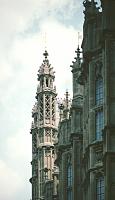
|
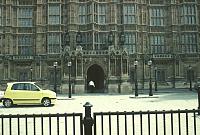
|
The Old Palace YardThe supervisor of the sculpture team was John Thomas, who also designed much of the sculpture. Sculptural decoration includes life-sized figures on the facade and throughout the interior as well as coats of arms and heraldic symbols. |
| |
|
Royal badges in panelled transoms above the windows and the portcullis with the crown Carvings of the portcullis, with and without the crown, decorate the facade and connect the parliament building with the nearby Henry VII's Chapel, where the symbol represents the Beaufort family. |
| "It was at this period that it became the accepted symbol for Parliament" (Riding 115). (See also the carved portcullis below.) |
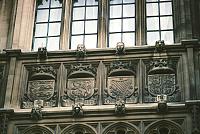
|
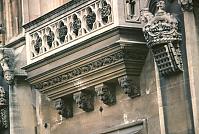
|
| |
|
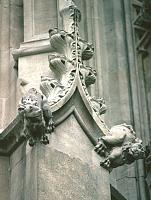
|
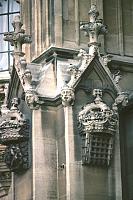
|
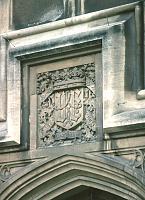
|
| |
|
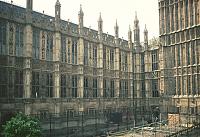
|
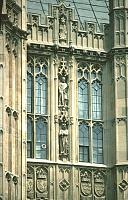 |
The New Palace Yard |
| |
|
Center: lamp; right: fence railingsThe railings were designed by Sir Charles Barry's son, E. M. Barry, and executed by John Hardman. |
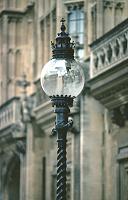
|
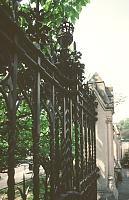
|
Return to page 1.
Work Consulted and/or Cited:
Roger Dixon and Stefan Muthesius. Victorian Architecture. London: Thames and Hudson, 2001 (reprint; original copyright, 1978).
M. H. Port, editor. The Houses of Parliament. New Haven: Yale UP, 1976.
Christine Riding and Jacqueline Riding. The Houses of Parliament: History, Art, Architecture.. London: Merrell, 2000.
Ann Saunders. The Art and Architecture of London. London: Phaidon, 1984; 2000.
 Click here to return to index of art historical sites.
Click here to return to index of art historical sites.
 Click here to return to index of artists and architects.
Click here to return to index of artists and architects.
 Click here to return to chronological index.
Click here to return to chronological index.
 Click here to see the home page of Bluffton College.
Click here to see the home page of Bluffton College.
© 2003 Mary Ann Sullivan.
I have photographed (on site), scanned, and manipulated all the images on these pages. Please feel free to use them for personal or educational purposes. They are not available for commercial purposes.


 Click here to return to index of art historical sites.
Click here to return to index of art historical sites.
 Click here to return to index of artists and architects.
Click here to return to index of artists and architects.
 Click here to return to chronological index.
Click here to return to chronological index.
 Click here to see the home page of Bluffton College.
Click here to see the home page of Bluffton College.
